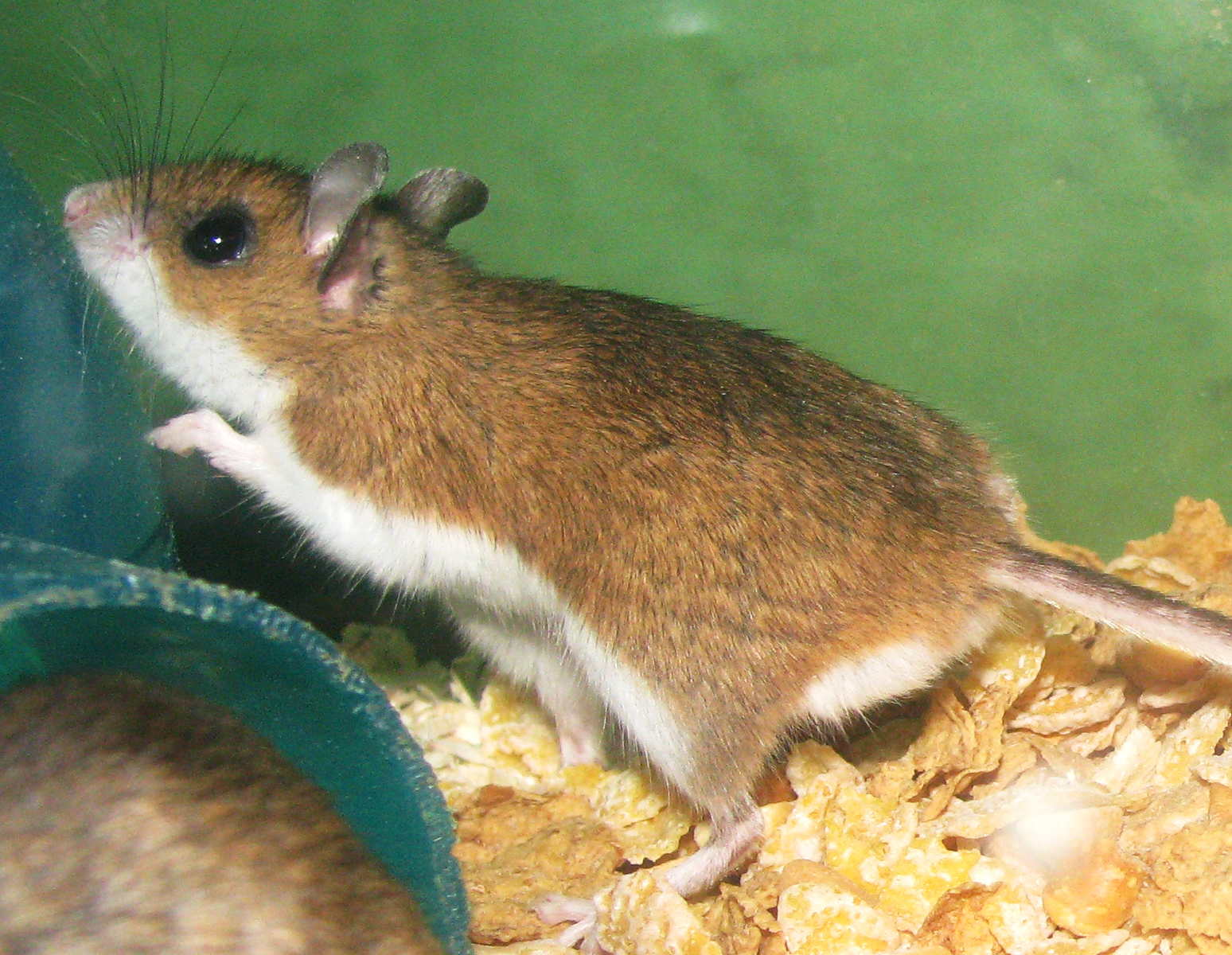Mice! Not my favorite inhabitants of Owl Acres. They have been scampering about all summer, avoiding the owls, raising their broods. And now they’re looking for a warm place to move into for the winter. They can get in just about everywhere, and can chew through wires when they want to. Several times I have paid the heating and air conditioning folks to come out and fix the low voltage wires for the air conditioner that the mice had chewed through while making a nest in there. This last time, we put the wires into conduit. Chew through that if you will!
I’ve always just called them field mice to distinguish them from that most annoying cousin of theirs—the house mouse (Mus musculus). It turns out that we have five species of mice in Iowa, and probably most of them on Owl Acres.
Deer mice (Peromyscus maniculatus) and white-footed mice (Peromyscus leucopus) are two common varieties. The deer mouse has a rich coat of fur that is gray to brown on its back with a darker stripe down the center. It has a long furry tail that is distinctly gray to brown on top and white underneath with a tuft of white hairs at the tip. The white-footed mouse has less luxurious fur and no tuft of white on its tail. Both species have white bellies and feet, large mostly hairless ears, bulging black eyes, and pointy rodent noses with big, coarse whiskers. Both species breed up to four times in a year, producing an average of five pups per litter. Their fecundity is fortunate for their predators since everybody from snakes, weasels, coyotes and foxes to owls, hawks and the local cat likes to eat them. It’s not so fortunate for the humans. A given mouse won’t last more than a year, and the entire local population turns over every year on average. In this way, they form an important staple in the food chain– yum yum!
Both species are nocturnal, skittering around the fields and grasses eating seeds, fruits, insects and fungi. They have an excellent sense of touch using their big whiskers, as well as very good vision, hearing and smell. They can swim and climb trees, and do when searching for food. And, amazingly, if you take one of them away from its home and displace it by up to two miles, it will find its way back within a couple of days. How do they do that?
Deer mice and white-footed mice don’t hibernate, so they gather and stash up to three quarts worth of grains, seeds, and other food for the winter. They nest in abandoned underground burrows or in hollow logs and similar habitat above ground. They might move into the house or garage as well if they get a chance.
Two other species of mice native to Iowa and therefore possibly present on Owl Acres are the meadow jumping mouse (Zapus hudsonius) and the western harvest mouse (Reithrodontomys megalotis). The meadow jumping mouse has stronger, larger hind legs that allow it to jump up to three feet when it is startled. It also hibernates. The western harvest mouse is smaller and more slender than its cousins and builds a spherical nest on the ground under leaves and grass. It doesn’t hibernate, so gathers food for the winter in its nest.
All of these critters likely live in the grass and woods around my house. As tiny mammals, they are born hairless and blind, with their ears pinned down. Their loving mammal mother nurses and protects them, and if she senses that her babies are in danger, she will move them, one by one, like a cat does, by carrying them at the nape of the neck to a new place. Considering the fact that they are almost all eaten by the end of the year, it’s an errand of fond hope. They all mature quickly and start reproducing within a month or so.
These mice, we discover, can also accomplish great feats of strength and agility. Stay tuned for the next post.
Photo by: 6th Happiness

1 comment
Little buggers!